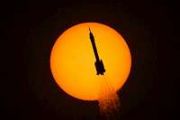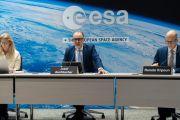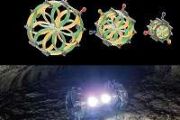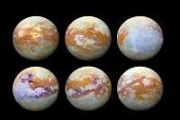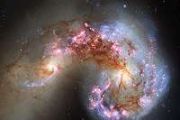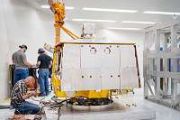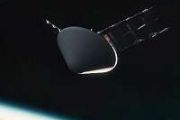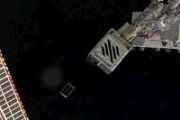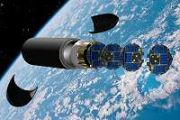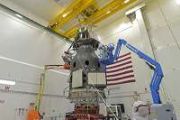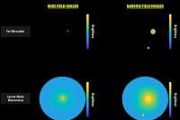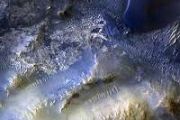
Copernical Team
Ariane 6: Launchpad testing
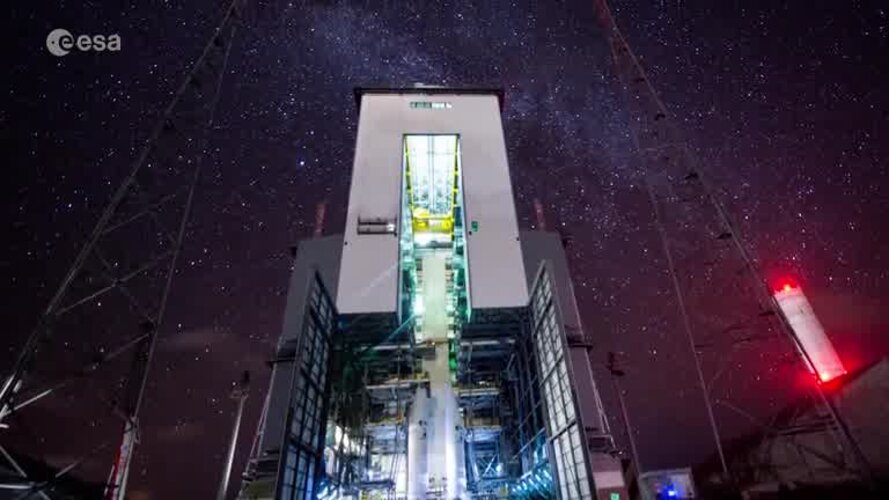 Video:
00:03:57
Video:
00:03:57
It has been an exciting and busy summer for the European Space Agency, with development and testing of its new Ariane 6 launcher. At Europe’s spaceport in, French Guiana, a test model of the launcher’s central core was assembled for the first time. Ariane 6 is the first Ariane rocket to be assembled horizontally, which is simpler and less costly than more traditional vertical assembly. Then, the rocket was moved to its launchpad and placed upright in the massive mobile gantry for combined tests, to validate the compatibility between all components of the complete launch system. Soon
Solar Orbiter solves magnetic switchback mystery

With data from its closest pass of the Sun yet, the ESA/NASA Solar Orbiter spacecraft has found compelling clues as to the origin of magnetic switchbacks, and points towards how their physical formation mechanism might help accelerate the solar wind.
Circalunar clocks: Using the right light
 How animals are able to interpret natural light sources to adjust their physiology and behaviour is poorly understood. The labs of Kristin Tessmar-Raible (Max Perutz Labs Vienna, Alfred Wegener Institut, University of Oldenburg) and Eva Wolf (Johannes Gutenberg University and Institute of Molecular Biology Mainz) have now revealed that a molecule called L-cryptochrome (L-Cry) has the biochemical
How animals are able to interpret natural light sources to adjust their physiology and behaviour is poorly understood. The labs of Kristin Tessmar-Raible (Max Perutz Labs Vienna, Alfred Wegener Institut, University of Oldenburg) and Eva Wolf (Johannes Gutenberg University and Institute of Molecular Biology Mainz) have now revealed that a molecule called L-cryptochrome (L-Cry) has the biochemical Chinese Gaofen satellites deployed for quake-hit Sichuan
 China has applied its Gaofen series satellites to help with relief work following a 6.8-magnitude earthquake in southwest China's Sichuan Province, according to the website of state broadcaster China Central Television (CCTV).
More than 10 satellites were deployed to capture images of the quake-hit areas 10 minutes after the earthquake jolted Sichuan's Luding County at 12:52 p.m. Monday, i
China has applied its Gaofen series satellites to help with relief work following a 6.8-magnitude earthquake in southwest China's Sichuan Province, according to the website of state broadcaster China Central Television (CCTV).
More than 10 satellites were deployed to capture images of the quake-hit areas 10 minutes after the earthquake jolted Sichuan's Luding County at 12:52 p.m. Monday, i Could more of Earth's surface host life?
 Of all known planets, Earth is as friendly to life as any planet could possibly be - or is it? If Jupiter's orbit changes, a new study shows Earth could be more hospitable than it is today.
When a planet has a perfectly circular orbit around its star, the distance between the star and the planet never changes. Most planets, however, have "eccentric" orbits around their stars, meaning the o
Of all known planets, Earth is as friendly to life as any planet could possibly be - or is it? If Jupiter's orbit changes, a new study shows Earth could be more hospitable than it is today.
When a planet has a perfectly circular orbit around its star, the distance between the star and the planet never changes. Most planets, however, have "eccentric" orbits around their stars, meaning the o Foundation model improves accuracy for remote sensing image interpretation
 A new foundation model dubbed RingMo has been developed to improve accuracy for remote sensing image interpretation, according to the Aerospace Information Research Institute (AIR), Chinese Academy of Sciences (CAS).
Remote sensing images has been successfully applied in many fields, such as classification and change detection, and deep learning approaches have contributed to the rapid dev
A new foundation model dubbed RingMo has been developed to improve accuracy for remote sensing image interpretation, according to the Aerospace Information Research Institute (AIR), Chinese Academy of Sciences (CAS).
Remote sensing images has been successfully applied in many fields, such as classification and change detection, and deep learning approaches have contributed to the rapid dev Iridium announces 9th SpaceX launch
 Iridium Communications Inc. (NASDAQ: IRDM) reports it has reached an agreement with SpaceX to launch up to five of the company's remaining ground spare satellites from the Iridium NEXT program, on its Falcon 9 rocket.
Known as Iridium-9, the launch is planned to take place at Vandenberg Space Force Base in mid-2023. Earlier this year, Iridium celebrated the 25th anniversary of the first la
Iridium Communications Inc. (NASDAQ: IRDM) reports it has reached an agreement with SpaceX to launch up to five of the company's remaining ground spare satellites from the Iridium NEXT program, on its Falcon 9 rocket.
Known as Iridium-9, the launch is planned to take place at Vandenberg Space Force Base in mid-2023. Earlier this year, Iridium celebrated the 25th anniversary of the first la OneWeb and HD Hyundai Avikus to advance marine technology by unlocking the potential of LEO connectivity
 OneWeb, the low Earth orbit (LEO) satellite communications company, and HD Hyundai Avikus, a world leader in advanced autonomous ship, has announced the signing of a Memorandum of Understanding (MoU).
This agreement, signed during a dedicated ceremony at SMM Hamburg 2022, signifies a new partnership to explore opportunities for advanced LEO satellite technology to support the next generati
OneWeb, the low Earth orbit (LEO) satellite communications company, and HD Hyundai Avikus, a world leader in advanced autonomous ship, has announced the signing of a Memorandum of Understanding (MoU).
This agreement, signed during a dedicated ceremony at SMM Hamburg 2022, signifies a new partnership to explore opportunities for advanced LEO satellite technology to support the next generati Is over-eating to blame for bulges in Milky Way bar
 A new simulation conducted on the world's most powerful supercomputer dedicated to astronomy has produced a testable scenario to explain the appearance of the bar of the Milky Way. Comparing this scenario to data from current and future space telescopes will help clarify the evolution of our home Galaxy.
Astronomy is revealing the structure of the Milky Way Galaxy in which we live in incre
A new simulation conducted on the world's most powerful supercomputer dedicated to astronomy has produced a testable scenario to explain the appearance of the bar of the Milky Way. Comparing this scenario to data from current and future space telescopes will help clarify the evolution of our home Galaxy.
Astronomy is revealing the structure of the Milky Way Galaxy in which we live in incre Harris talks with space station astronauts, introduces new initiatives
 Vice President Kamala Harris spoke to astronauts serving on the International Space Station on Friday as she convened the meeting of the National Space Council at the Johnson Space Center in Houston.
In the call, Harris talked about the importance of protecting Earth and joining forces to meet other space initiatives. She is the chair of the council.
"Tell us what you are learnin
Vice President Kamala Harris spoke to astronauts serving on the International Space Station on Friday as she convened the meeting of the National Space Council at the Johnson Space Center in Houston.
In the call, Harris talked about the importance of protecting Earth and joining forces to meet other space initiatives. She is the chair of the council.
"Tell us what you are learnin 
